709-218-7927 The Landfall Garden House 60 Canon Bayley Road Bonavista, Newfoundland CANADA A0C 1B0 |
|---|
Second Essays
Sunday, May 12, 2024
I discussed the wheelbase issue with David:-
(1) David to buy a shaft and at least two wheels from Princess Auto in St John’s.
(2) Drill two holes 4” apart (to accommodate the wheel) at each end of the shaft with cotter pins to hold the wheels in place.
(3) The shaft to be as thick as possible (1”, or else ¾ “ or else ½”). Thicker is better, less likely to bend.
(4) The shaft to be as long as possible, up to 62”.
(5) The shaft will be U-Clamped to the tiller so that the shaft can be dropped out when the tiller passes through a doorway 32” wide,
(6) Extra pairs of holes can be drilled to accommodate different experimental wheelbases.
(7) If the full 62” is too wide for whatever reason, we trim the length of the shaft (and use what were the two innermost pairs of drilled holes)
(8) The wheels to be 16” minimum, enough to lift the current wheels above the soil. This will too lift the times higher, [perhaps permitting a shallower tilling rather than this twelve-inch(?) deep business.
(9) David’s discretion to buy TWO sets of wheels, one pair solid, one pair pneumatic. I would like to know how the handling differs, and since I have paid $500 for the tiller and $100 for delivery, and extra $70 on a $600 investment is not a killing concern.
Wednesday, May 15, 2024
David has found two 15-inch wheels and a 61” long axle; he will buy appropriate wheel clamps and be home, he says, tomorrow night.
Thursday, May 16, 2024
I take the hoe out for short run with only two tins, still the narrow wheelbase.
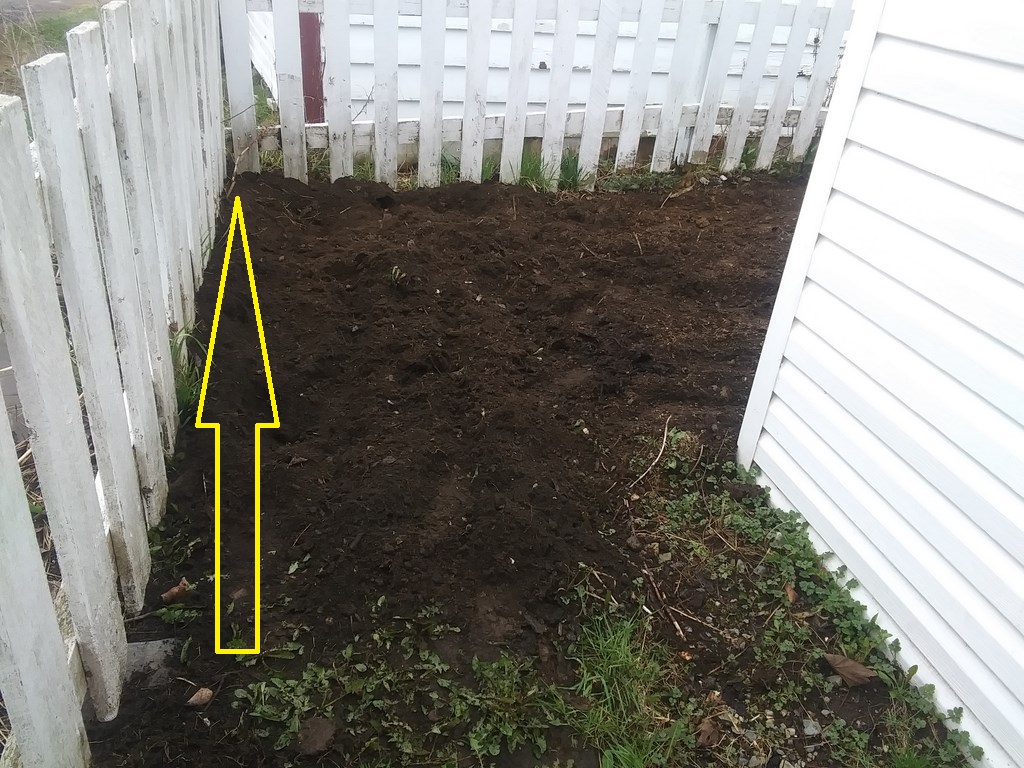
The mudguards now define a wider margin – with only two tine wheels in place – and so serve as a guide that prevents me from grazing the picket fence at the sides, but as I poke forwards into a corner, the forward part of the mud flap does not shield the fence from some chipping.
That said, the run along the eastern end of the plot is trouble-free.
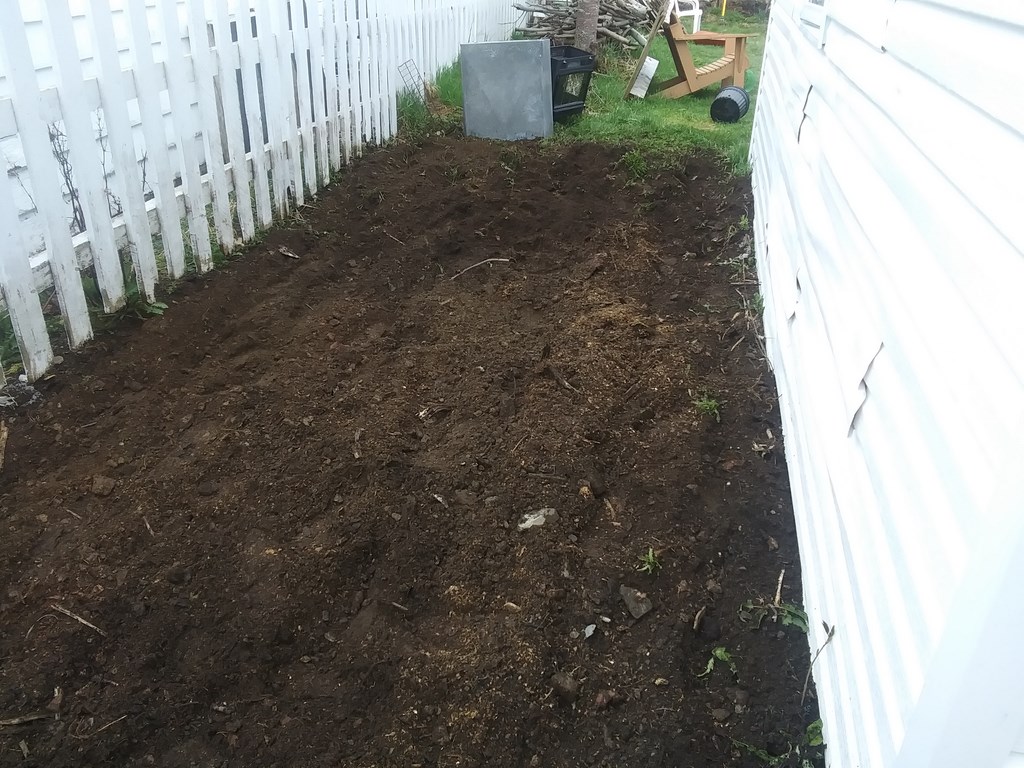
The runs down both sides of the plot likewise are not a problem.
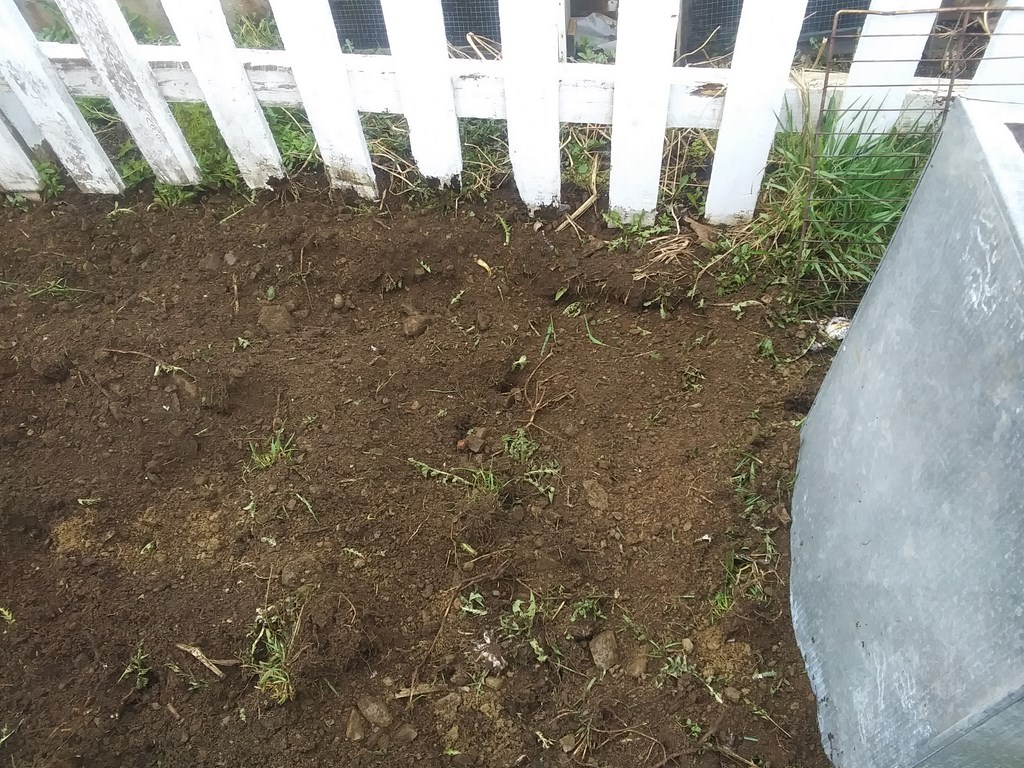
I finish the southern edge with a run from east to west and am happy with the result, but on a small plot the hoe is a devil to turn through 90 or 180 degrees for the next slice.
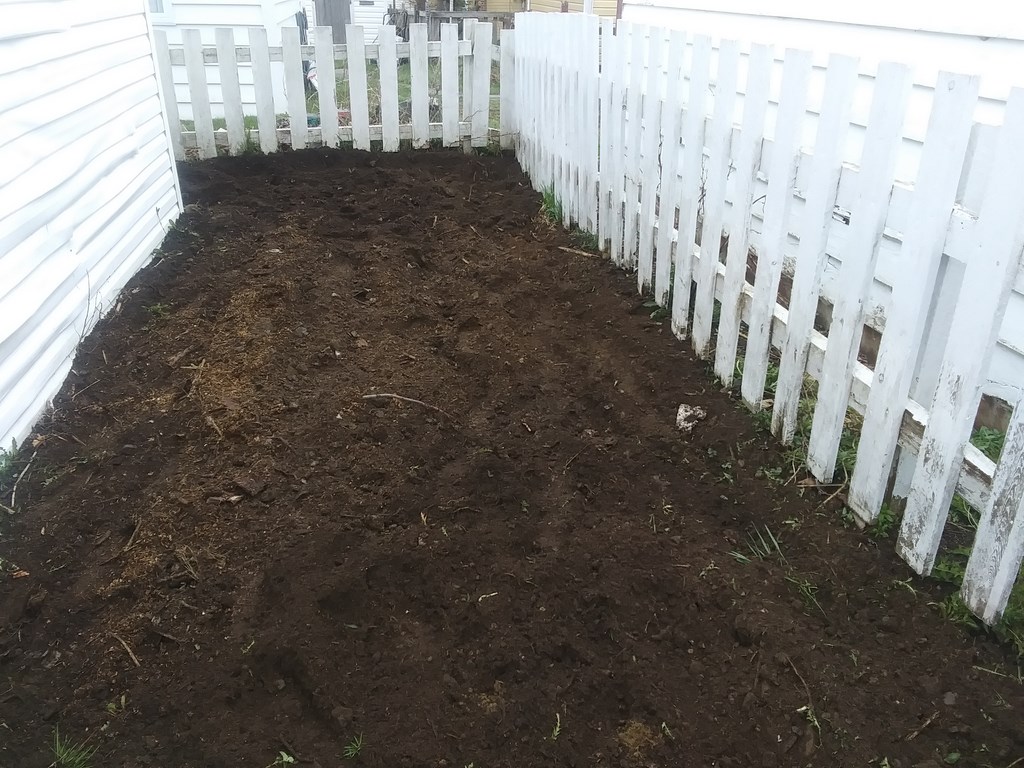
I am pleased though that this plot is churned in ten minutes; it would have taken me four to eight hours to dig this over, what with the rocks and all.
I can rake out the rocks over the next few days; rainfall will help free them of soil.
Friday, May 17, 2024
It was my dream/thinking that suggested that a wider wheelbase would work.
It is David’s mechanical genius that made my dream a reality.
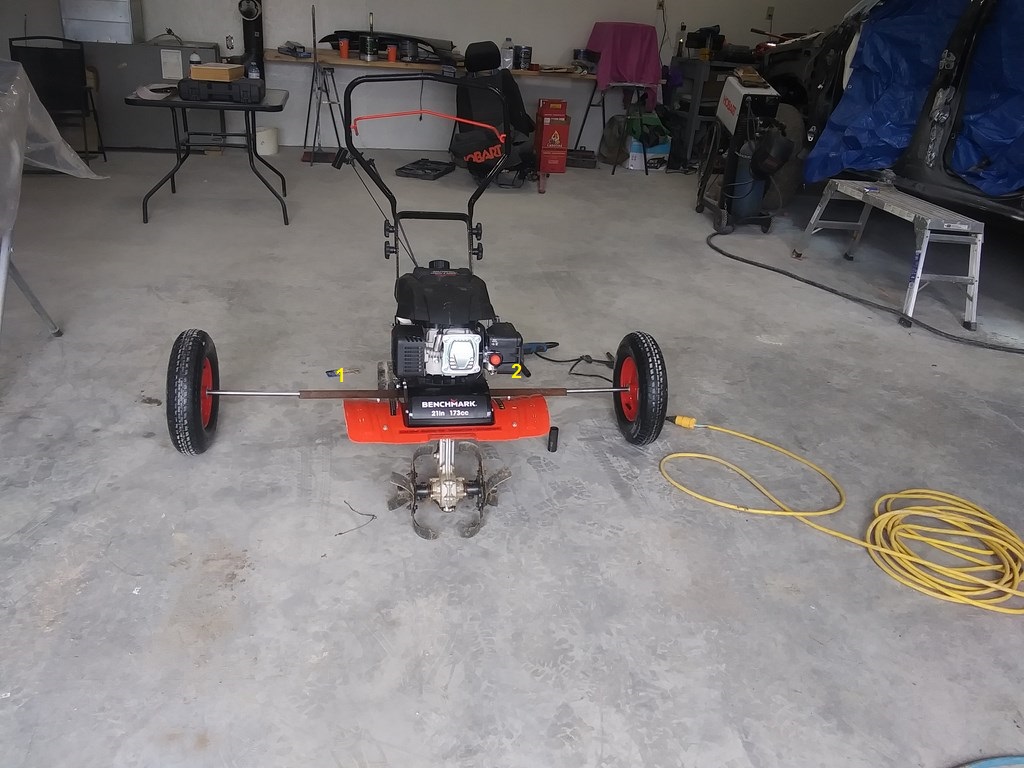
Here is a mockup. David has drilled out a shaft through the chassis, two lengths of pipe “!” and “2” are cut to length to support the shaft. The shaft itself will be trimmed later in the job. But now the beast looks like a tamed glider.
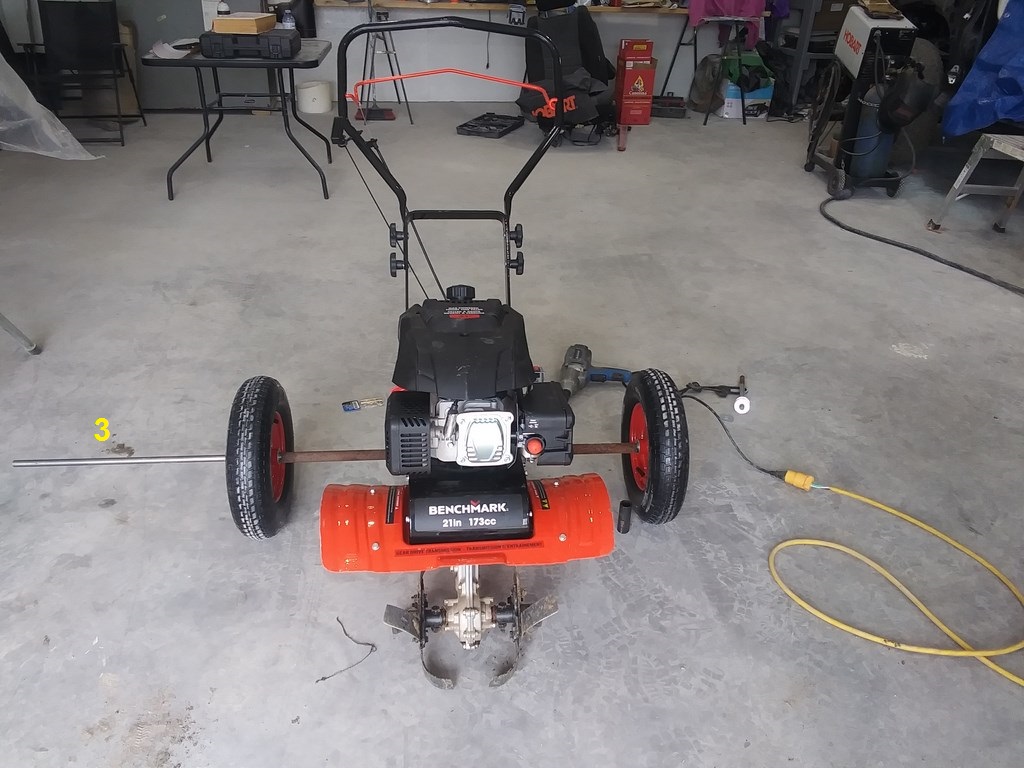
A better rendition. Part of the shat “3” must be trimmed off.
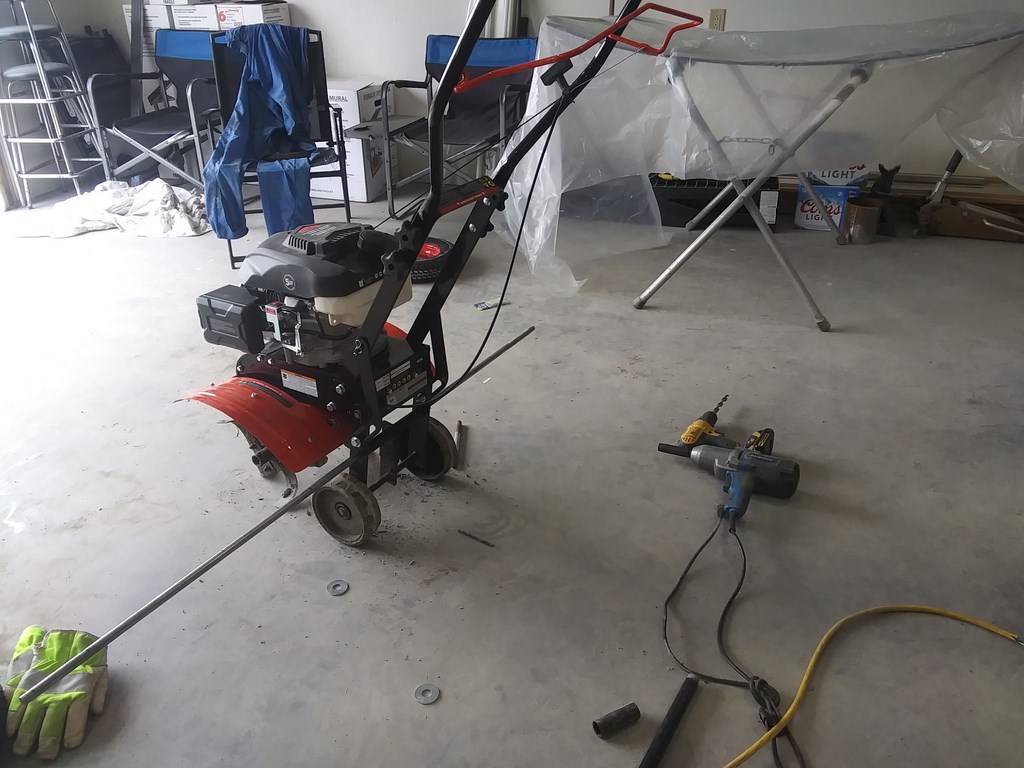
Same stage viewed from the rear.
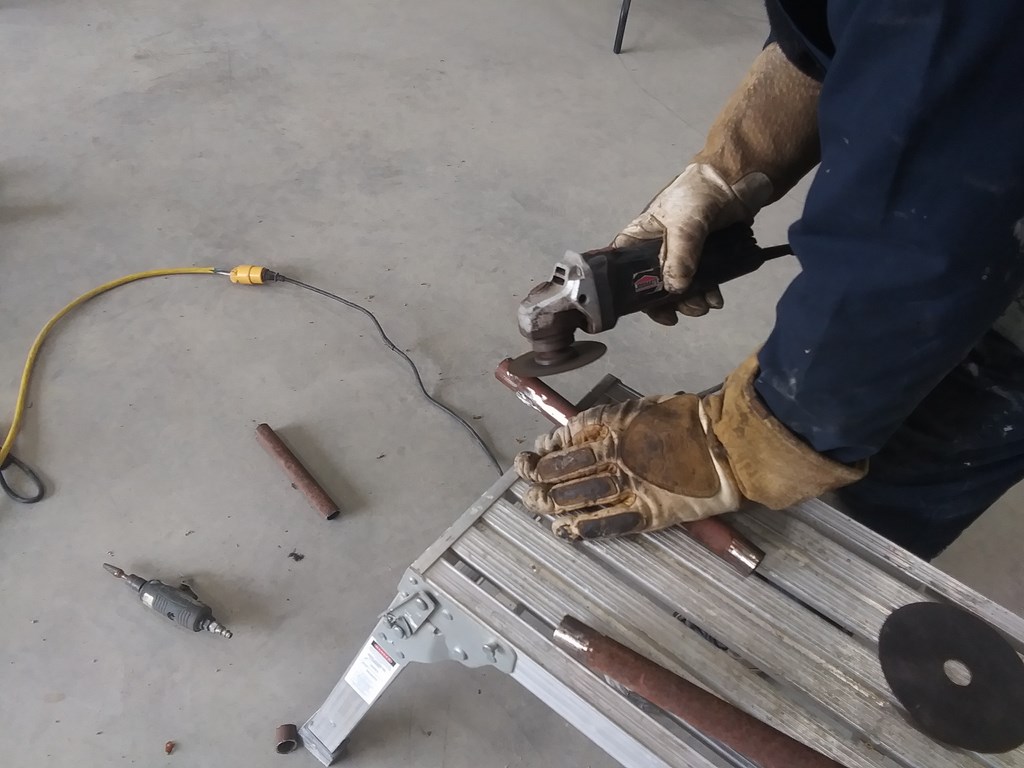
The two 12” pipes are trimmed square and are being ground to provide a clean surface for welding.
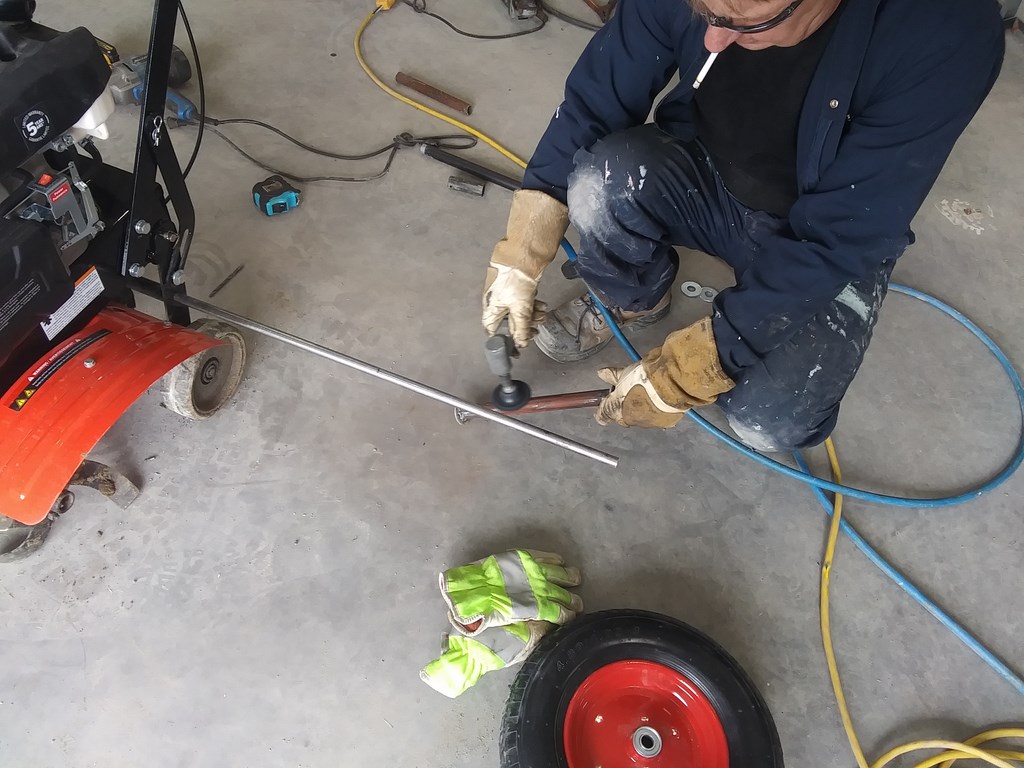
Grinding away …
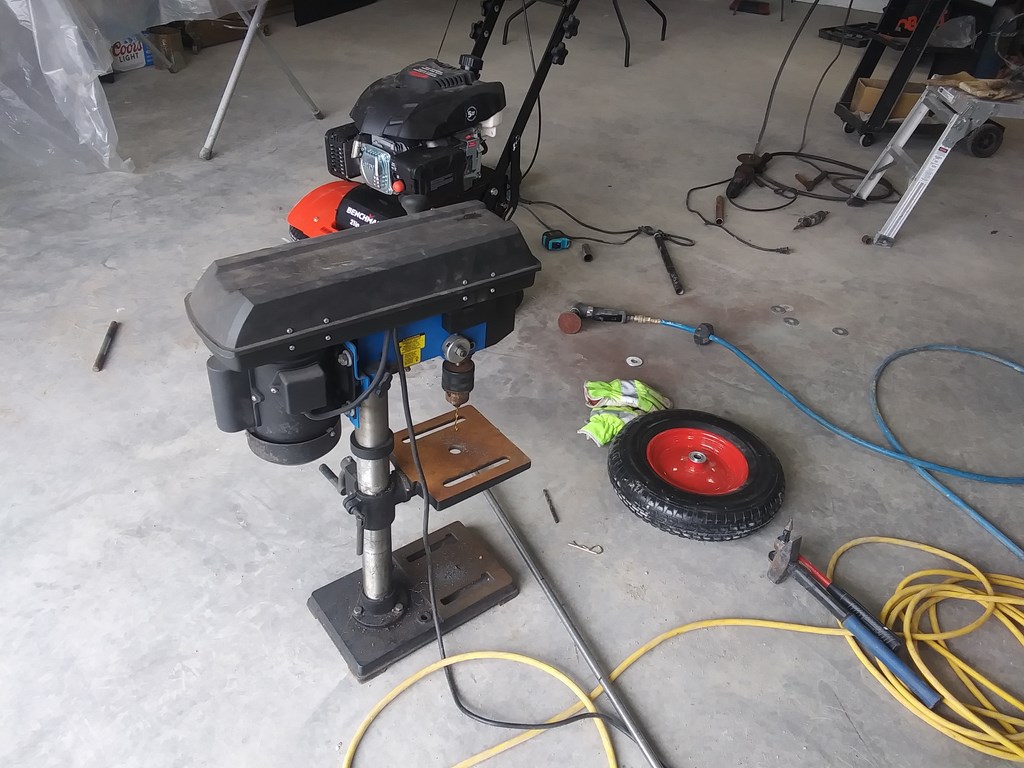
Now to drill a hole in each end of the shaft for the spring-pin that will hold the wheels on the shaft.

Drilling with accuracy.
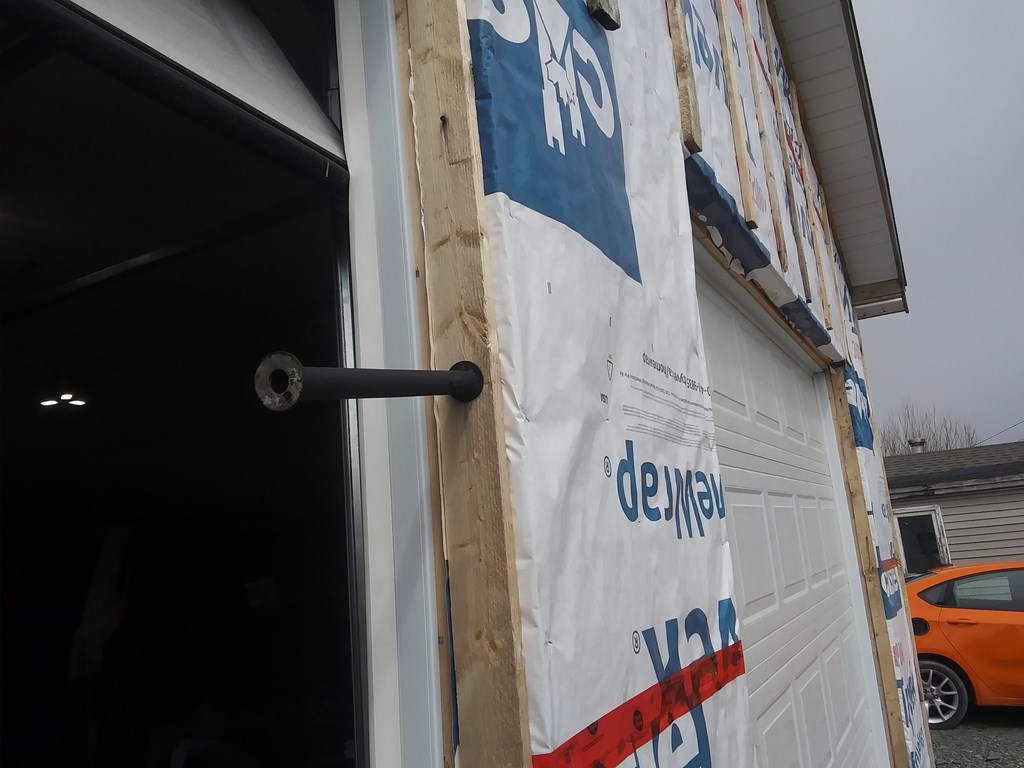
The 12” lengths of pipe have a washer welded to each end, have been rust-painted and are now drying off.
I had often wondered what those nails were for; now I know (grin)
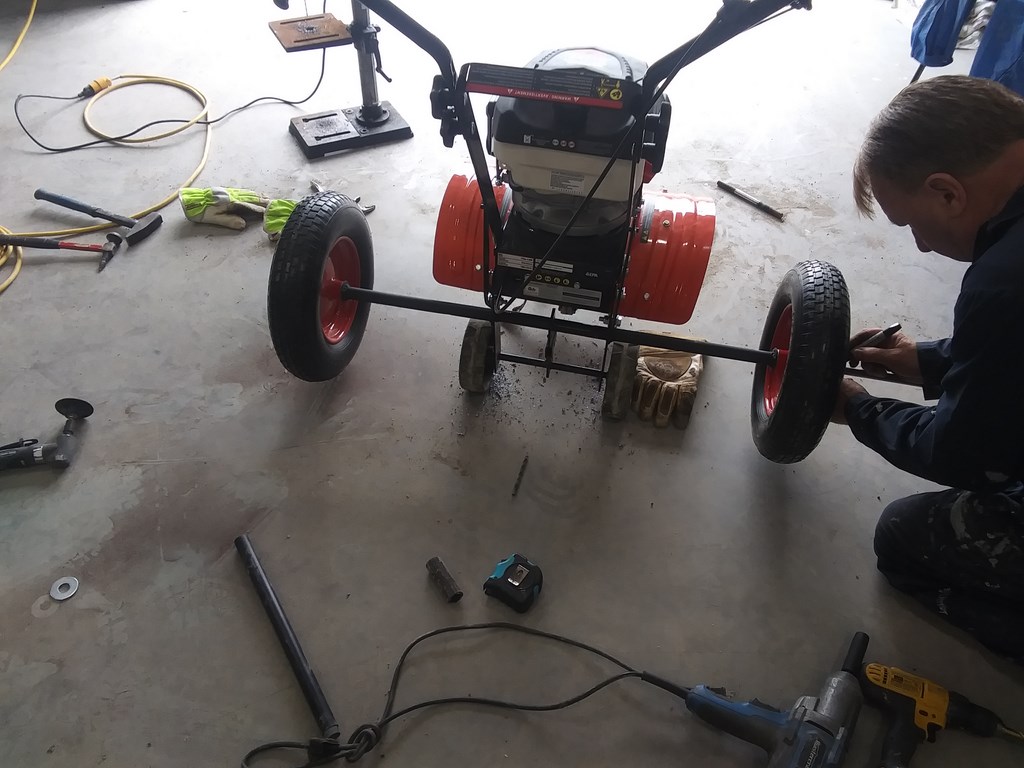
Marking the final length of shaft.
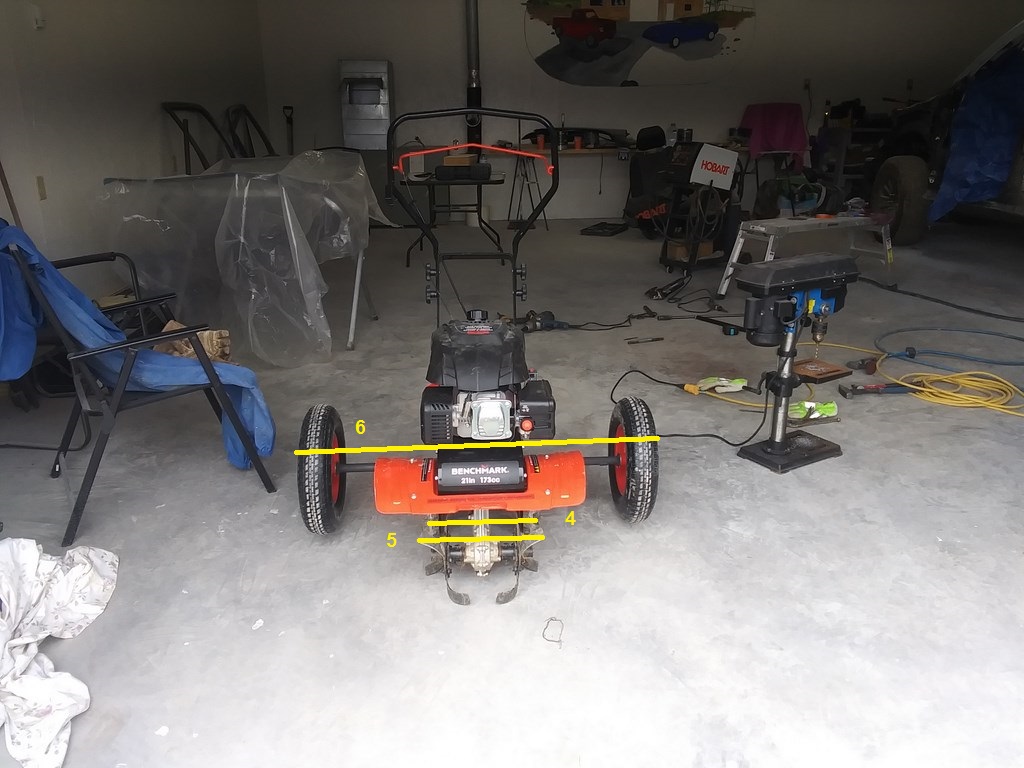
The beast in its modified form.
The original wheelbase “4” is 14” wide; the original wheels are solid tyre 6” diameter,
With two tine wheels the spread “5” is 12”, close to the length of the original wheelbase.
The new wheel base is 40” with pneumatic 15.5” tyres.
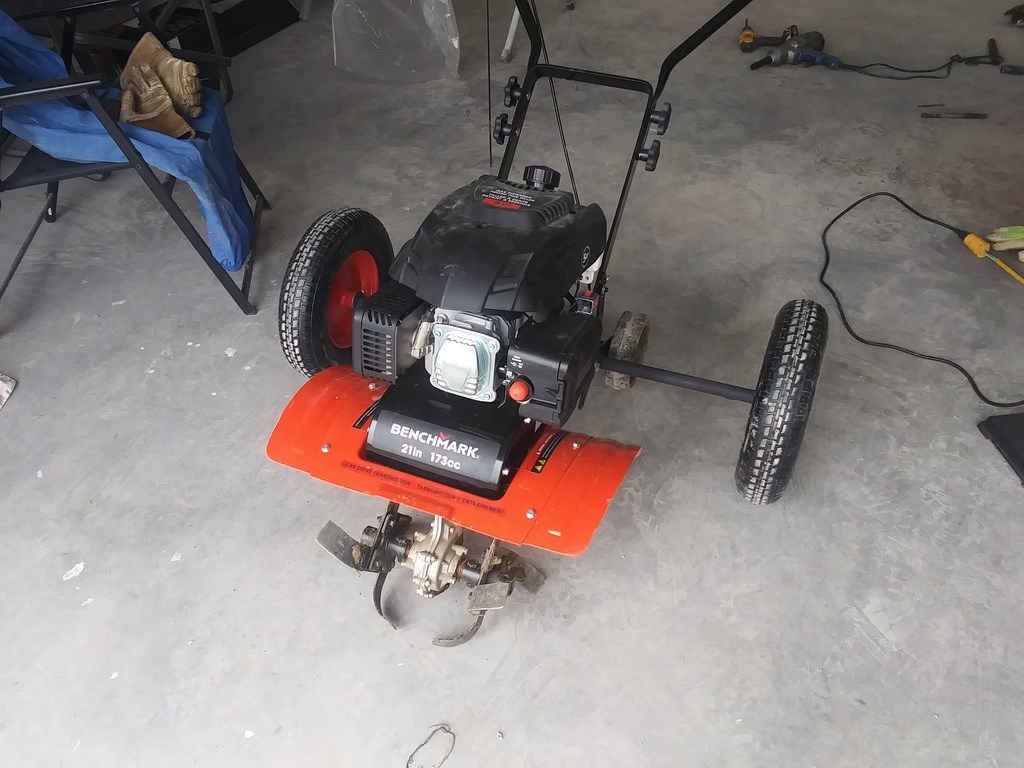
An oblique view.

A head-on view; ready to go to work.
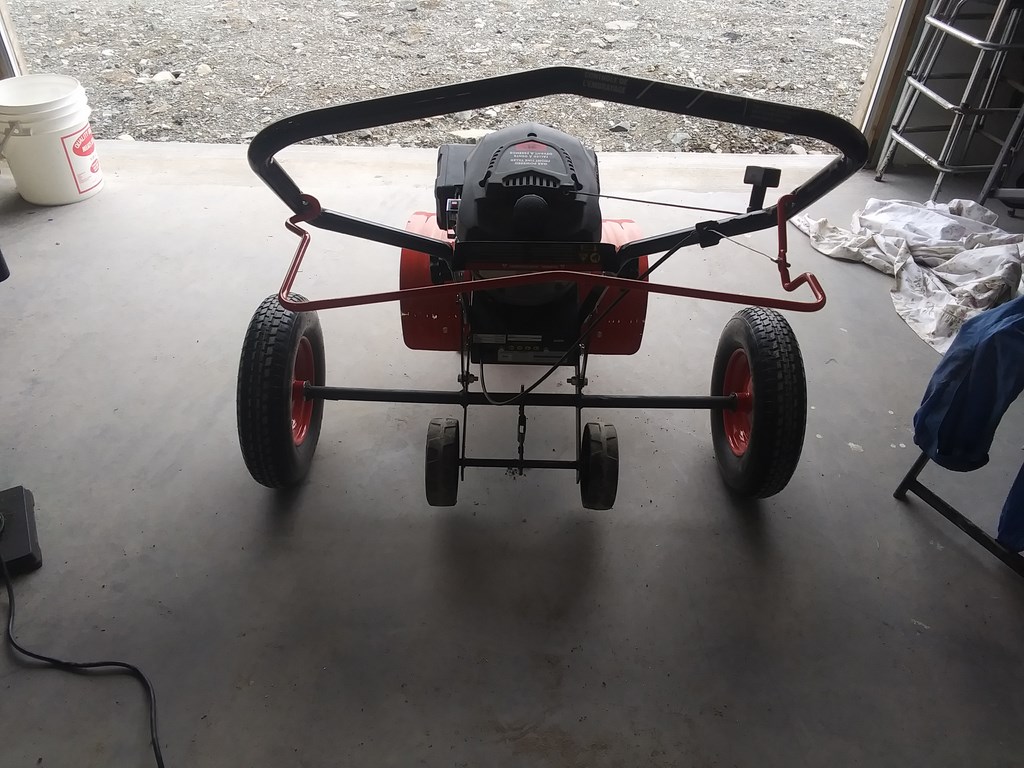
The operator’s view.
The original wheels are lifted clear from the ground.
With the handle at the right angle it becomes, ho-ho, a four-wheeler.
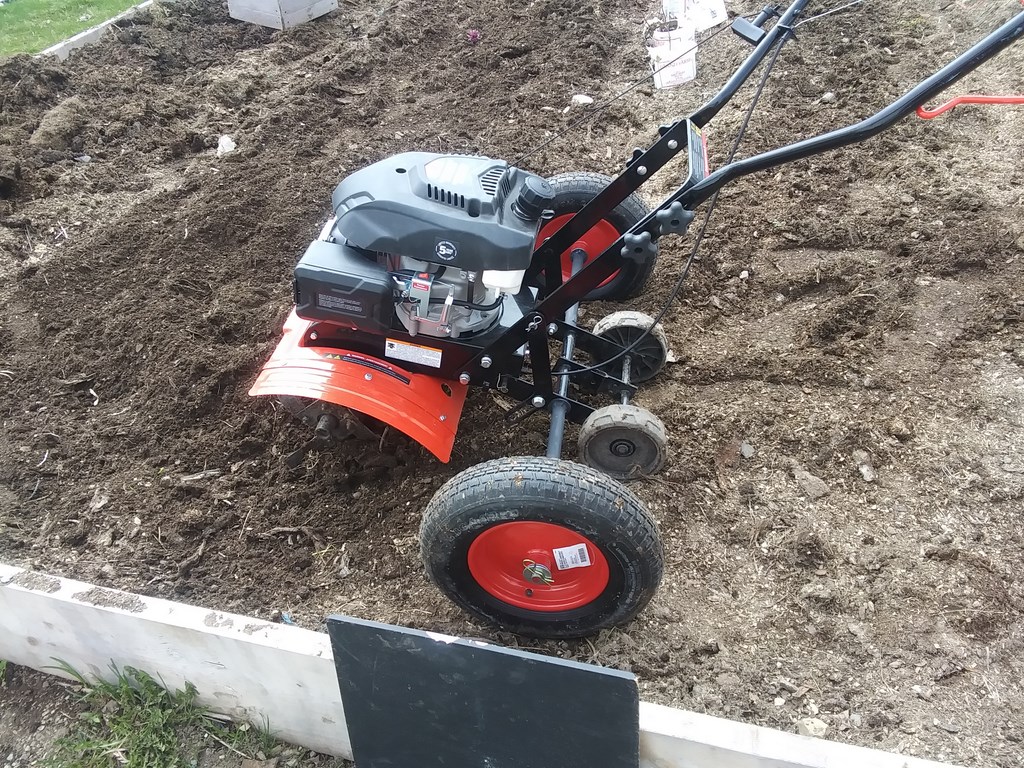
I gave it a spin in the raised bed; IT NOW HANDLES LIKE A LAWNMOWER!
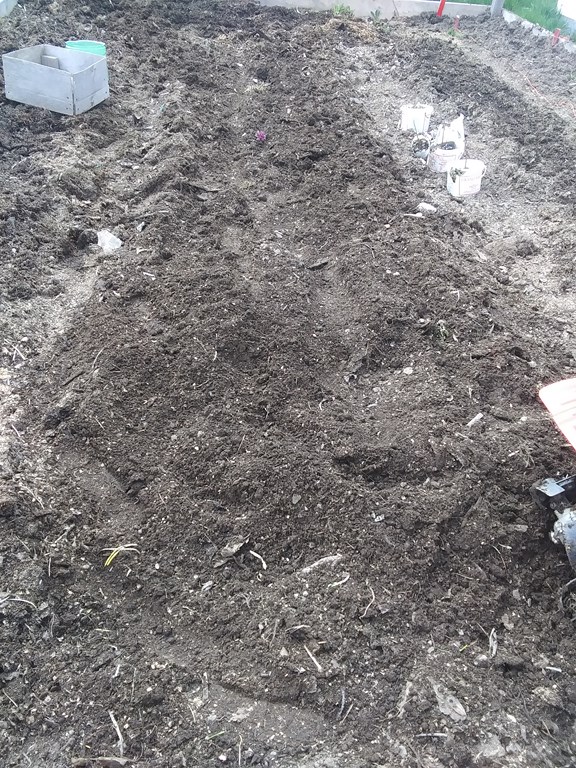
No bucking-bronco, a nice shallow cut (about four inches) which will leave a lot of worms sheltered at a deeper level.
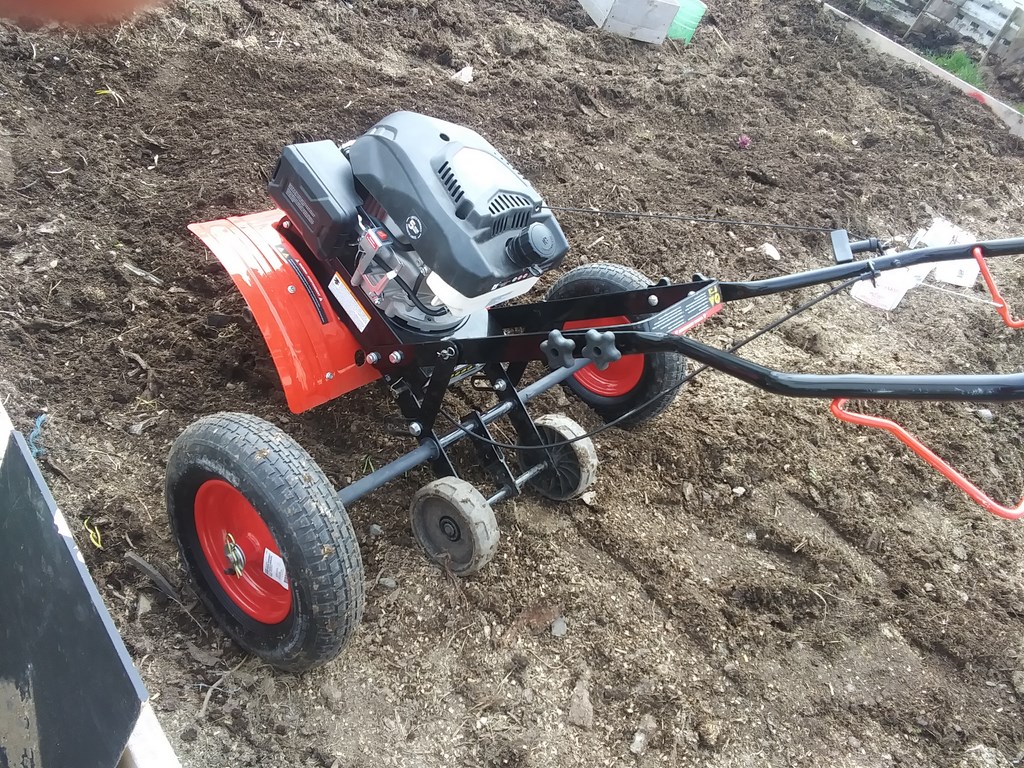
At the end of each row, it turns as easily as a lawn-mower.
Hooray!
Thursday, June 06, 2024
If the rain eases up I will ready the tiller and make two-foot wide beds across Stephen’s lot, with 4-foot wide nature-strips in between. The tilled strips will then be seeded for eight vines each.
Three weeks have elapsed since I experimented with the wider wheelbase. This will be a first real test of converting a vacant lot into a market garden.
I will prepare the machine by Checking the oil and gas levels, bolting on the two outside tine wheels.

All prepped up and ready to go. One end of the axle is burred and refuses to enter the axle housing or a wheel; I will grind off the burr when I remove the wheels again.
FWIW I am dressed in my tatty red sweater and my red hat so that, with the red machine, I am in a fashion “branded” as the rototiller guy.
I spent about six minutes doing a twelve-foot strip. I made six or eight passes.
The blades jump up when they strike a rock, so I need to work out when to force the blades down until one of them engages a rock that is free of soil and jerk it out of the ground.
Working by myself I have to clear the rocks by hand, so I need a set of green buckets to harvest rocks for David’s driveway.
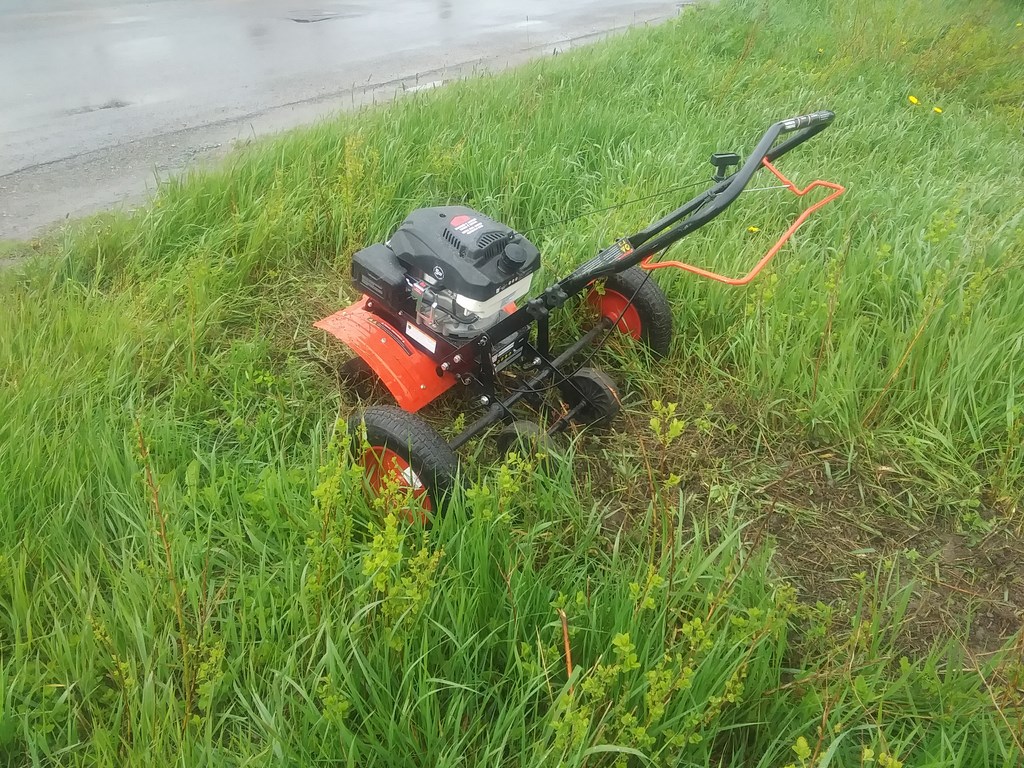
After two passes each way, enough of the weeds have been cleared to bare the soil enough to plant three pumpkin seeds in a spot.
So I feel confident now in soaking a handful (well, OK, 24 triplets of seeds) in water to accelerate germination)

After those six or eight passes, small shrubs have been chopped up; the roots are still in the ground, but a bed 24” wide provides avenues of growth for pumpkin vines.
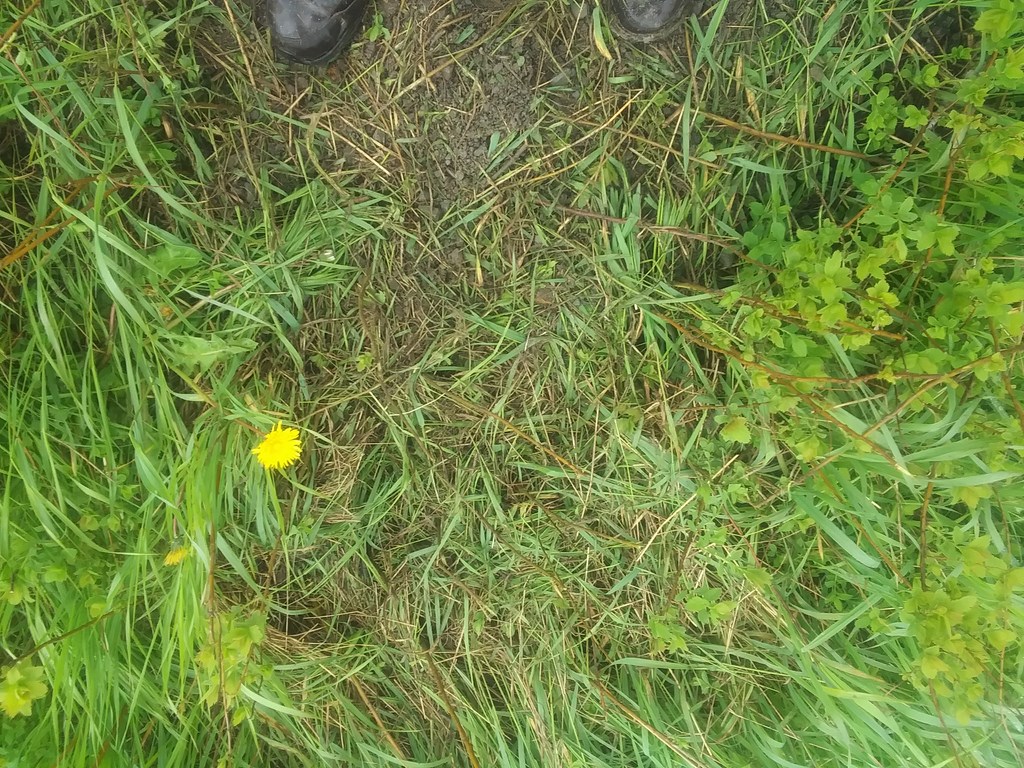
Here is a patch of the lot after just one or two passes. In this state the tiller is acting like a lawn-mower, but it is chopping off stalks of grass that can rot down in situ, that is, form compost in place.

Here is my cleared path from the north after those six or eight passes. This is encouraging, but my rate of clearing seems to be one minute per foot, in this territory. So over an hour per strip.

The rectangle outlines taller shrubbery that I believe marks the northern boundary; from there the arrow points to an apple tree that is ON the property.
Rain spatters again so I take a break to type this up. The scrubby stuff is about two feet high to the tips of the budding leaves.
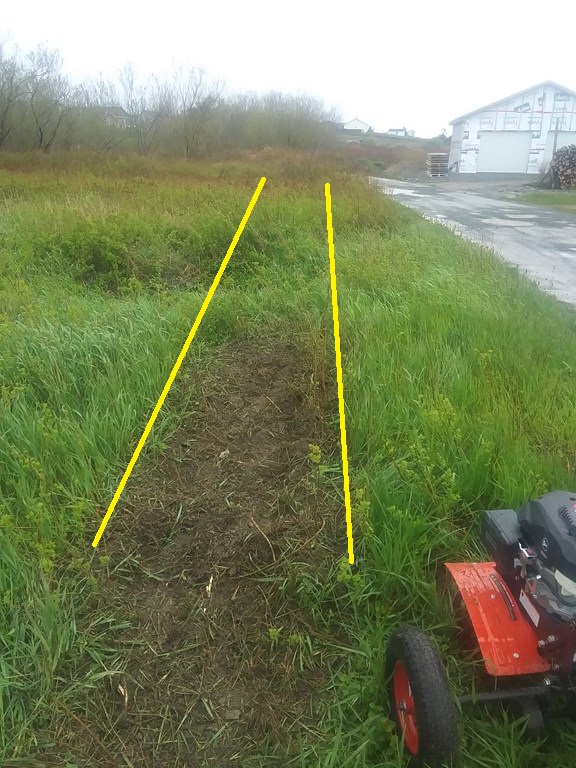
My first strip should occupy this area.
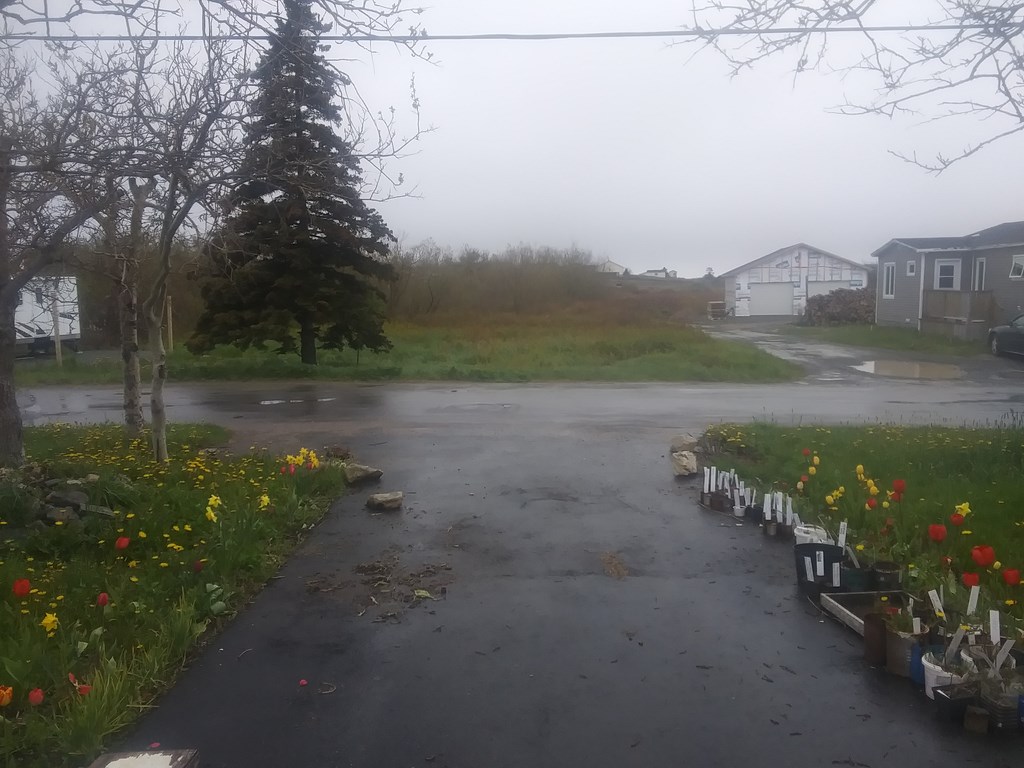
Look! My sample strip does not show up in the image! Admittedly the light is poor, and I am shooting from my driveway, but still and all, the strip(s) will be visible ONLY as you drive by the ends.
709-218-7927 CPRGreaves@gmail.com Bonavista, Saturday, June 22, 2024 1:45 PM Copyright © 1990-2024 Chris Greaves. All Rights Reserved. |
|---|
Later:
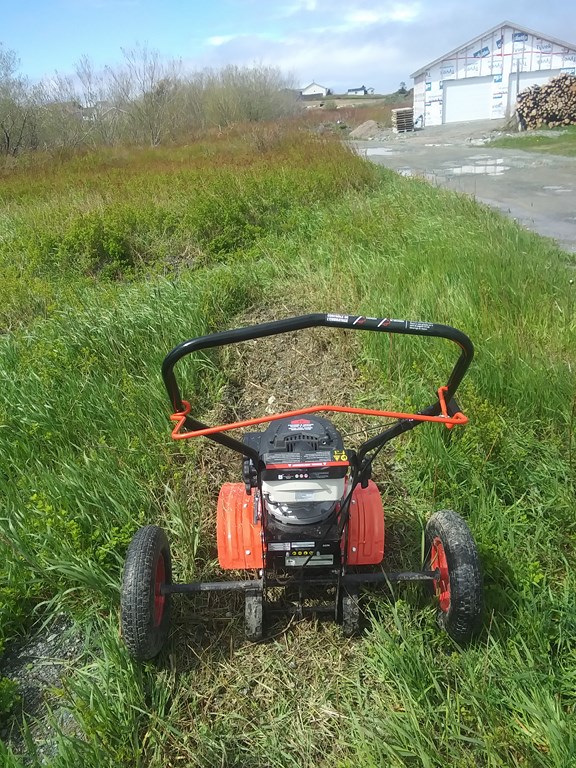
A photo showing how the out-rigger wheels straddle the tilled strip. As I work my way back and forth, the large wheels remain on firm, untilled ground.
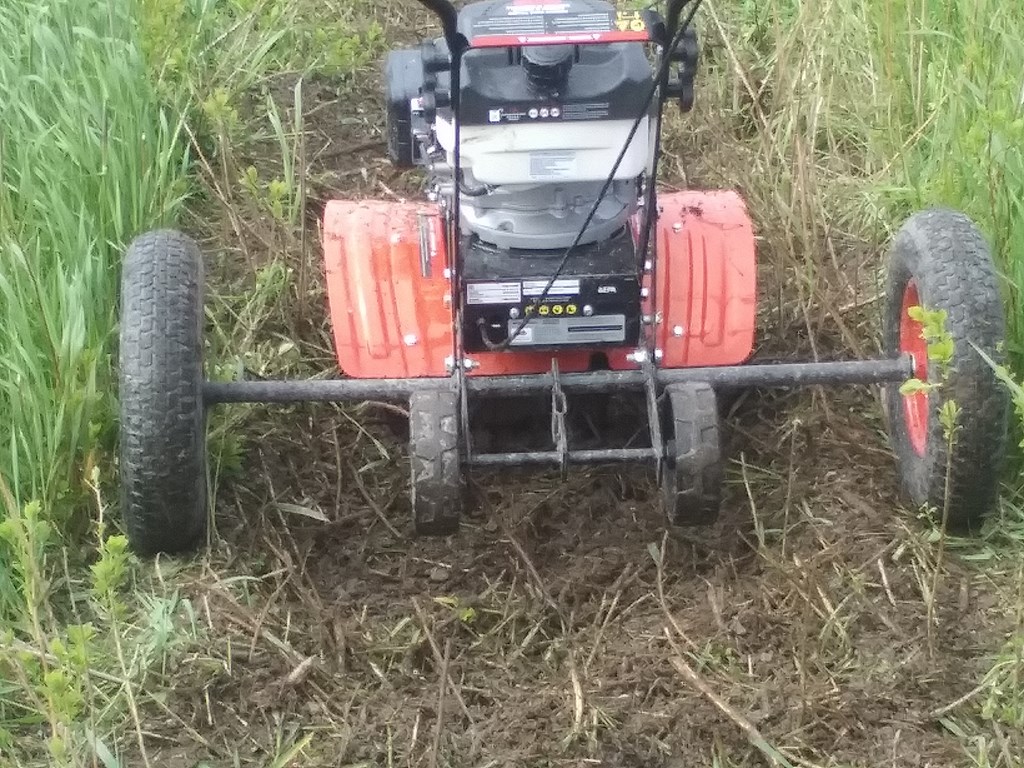

The till has uprooted an old fireside rug, not rotted, and wound it tight around the tiller shaft. I spend fifteen minutes with a knife and a pair of pliers extracting the tightly-wound rug and stems of shrubs.
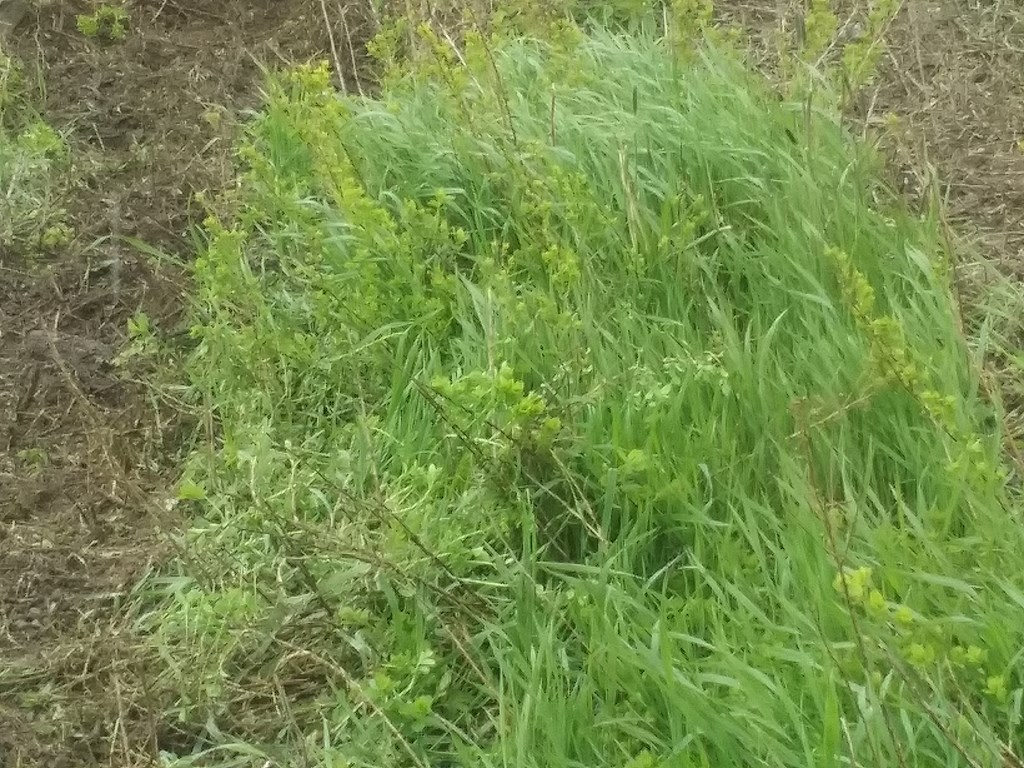
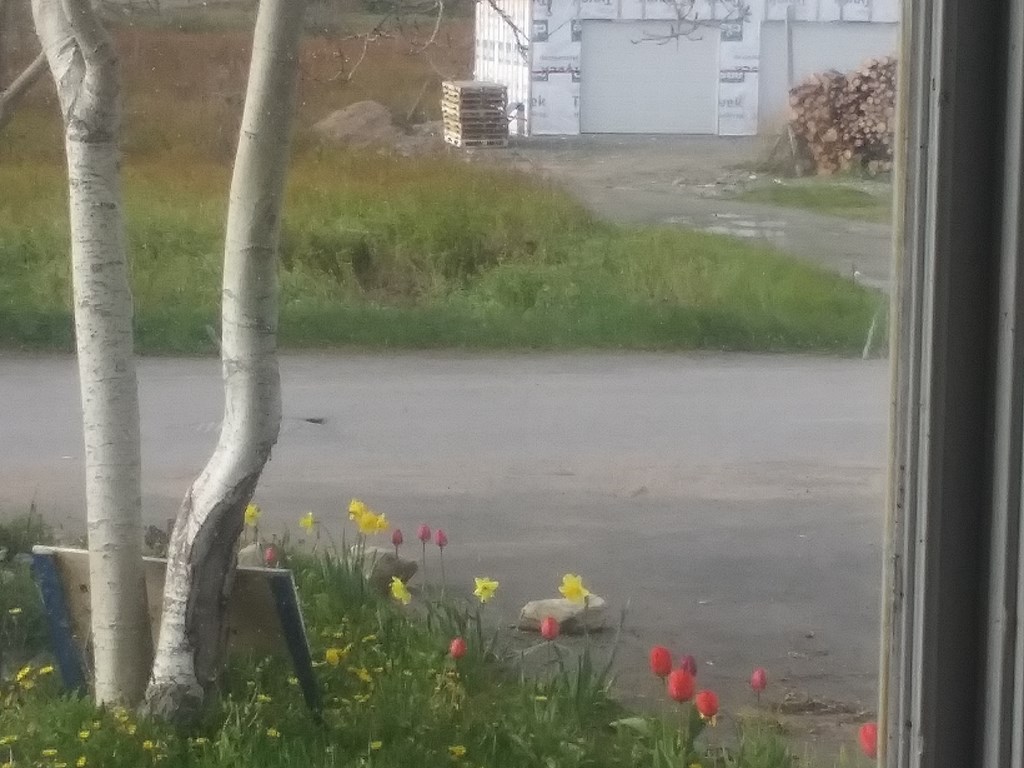
Now the two strips can be seen easily from my kitchen window.
Saturday, June 08, 2024
My first essay at trimming around a raised bed. The area around the bed is mostly the original lawn, with two small tongues of my original beds poking out.

I sent the rotary-hoe along the eastern edge. You can now see the arcs made by the tines as they met the ten-inch plank.
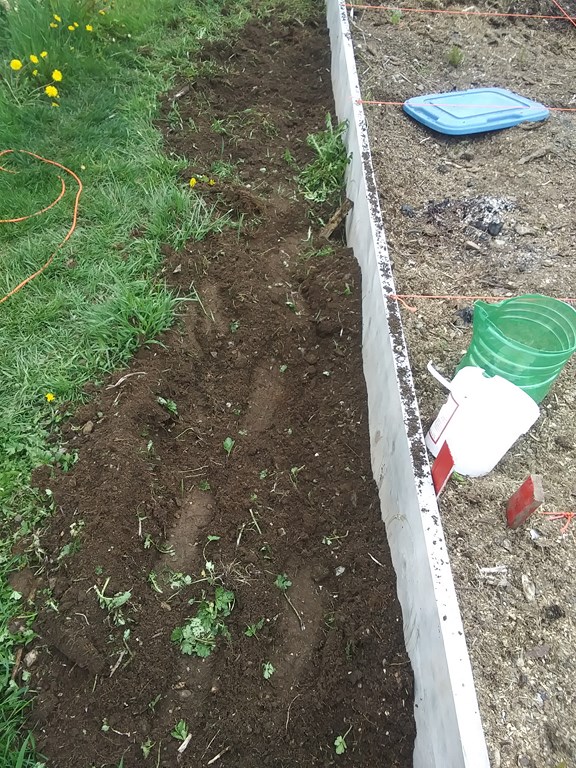
This stretch was difficult to till while the tines dug into the plank.
Eventually it dawned on me and I ran the hoe with about two inches space between the mudguard and the plank (see final image).
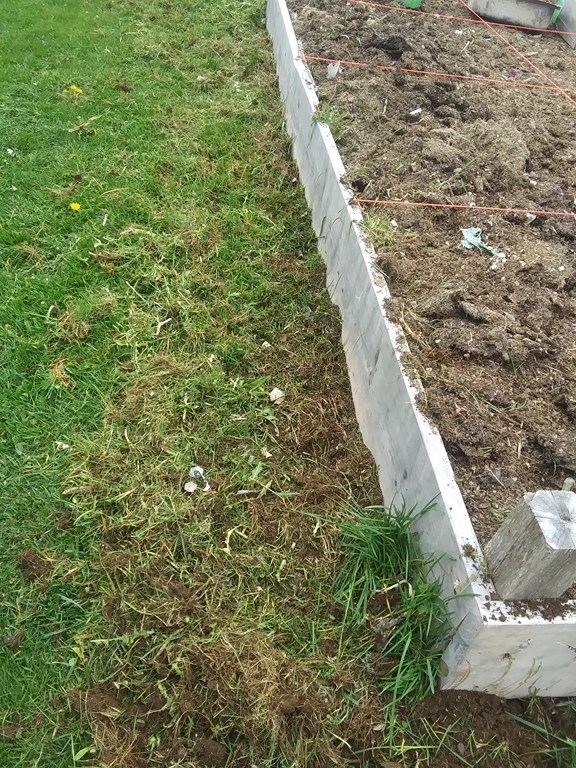
I ran my electric mower for the first time this year. It was more effective than I recall from last year. Indeed I had thought a couple of times about buying a new power mower. I prefer the electric because:-
(a) It is quieter
(b) It weighs less (easier to maneuver; I can lift and carry it easily with one hand.
(c) It is cheaper to run; energy is not wasted as it is in a gasoline engine (which greatly burns fuel to heat the engine)
(d) No need to store gasoline in the shed.
The mower trimmed a nice band of grass, but again, the kick-out as the till tines hit the plank reduced my ability to till and break the sod.
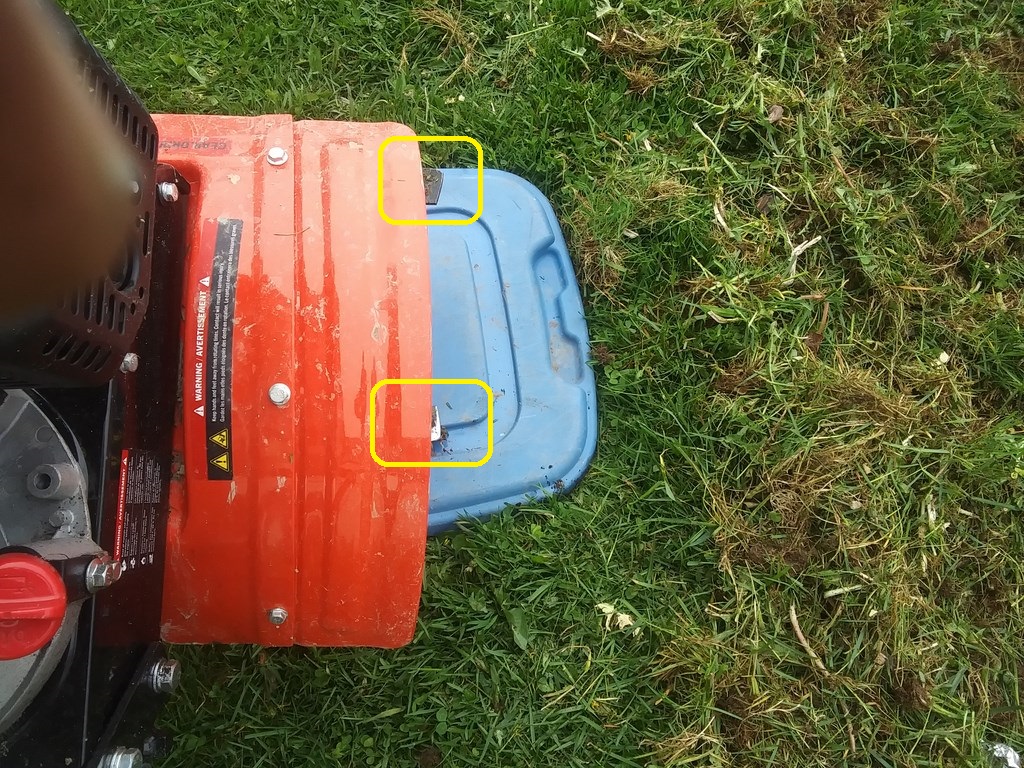
The answer might lie in a mudguard two inches wider.
David measures carefully and says “wun ‘n ‘arf” and that he can make it up for me next weekend.
Using the mudguard as a guide is even more important when tilling alongside a house. In a two-inch thick plank the tines make a scratch. On a stretch of plastic siding the tines would shred the siding!
Friday, June 21, 2024
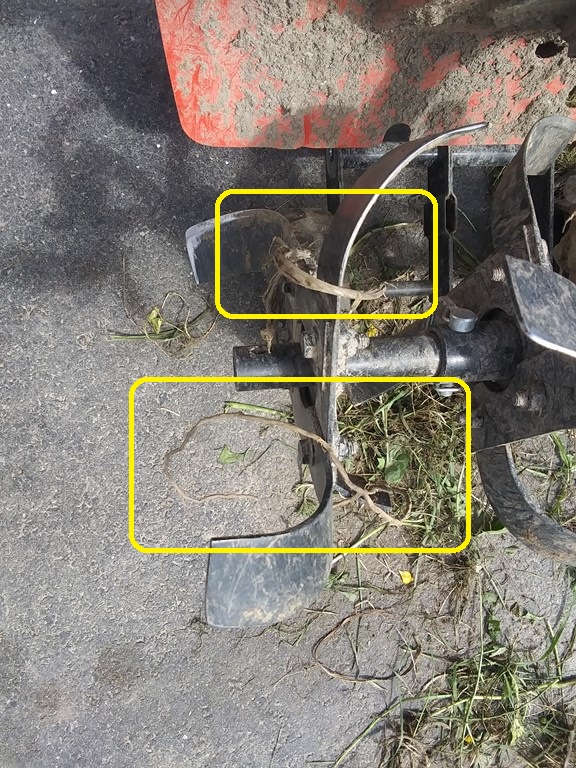
Lessons Learned: Bernard drew my attention to weeds twined around the tine shaft. “No Probs” I said, “They’ll come off easier when they are dried out a bit”.
This morning I had a chance to till a small area of weed at (Eu)gene’s place, three doors up the street, and the tiller stalled just as I finished the last square foot of tall weeds, with fresh weeds wrapped around and choking the diameter of the shaft; when the weeds accumulate the tines can’t dig in.
I brought the tiller home and got out my sharp gardening knife. There were two pieces of thin insulated copper wire at the heart of it.
Moral: A single strand of wire OR thick stem serves as a catalyst to attract much more vegetation, and attracts it amazingly quickly.
Saturday, June 22, 2024
I returned to Eugene’s place, four doors up, and roto-tilled the tiny plot extension a second time.

The newly tilled ground looks like an extension to the original plot. The star marks the water cutoff valve; we should ask before we plough any lot.
To the left of this image we see where ‘Gene has hilled his rows of potato chits.

The view from the house towards the street.
Roto-tilling such a tiny plot is almost useless as a tilling exercise. It does have marketing value. When ‘Gene sees that a 78-year old weakling like me has roughed up the ground with little effort, it makes a large vegetable plot in Newman’s Cove appealing.
A tiny plot does not give the tiller enough space to dig down deep and leave a level bed. Some soil always gets thrown out – see the hillock at the top of the photo, beyond the yellow line – which can leave what is in effect a shallow pit surrounded by loose soil.
In a plot that is, say, fifty feet on a side, the entire plot looks tilled, with a narrow fringe of soil around the edge, easily raked or pushed back in.